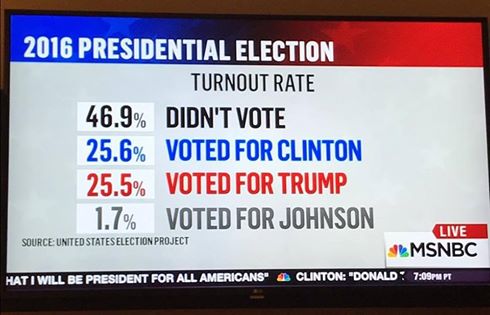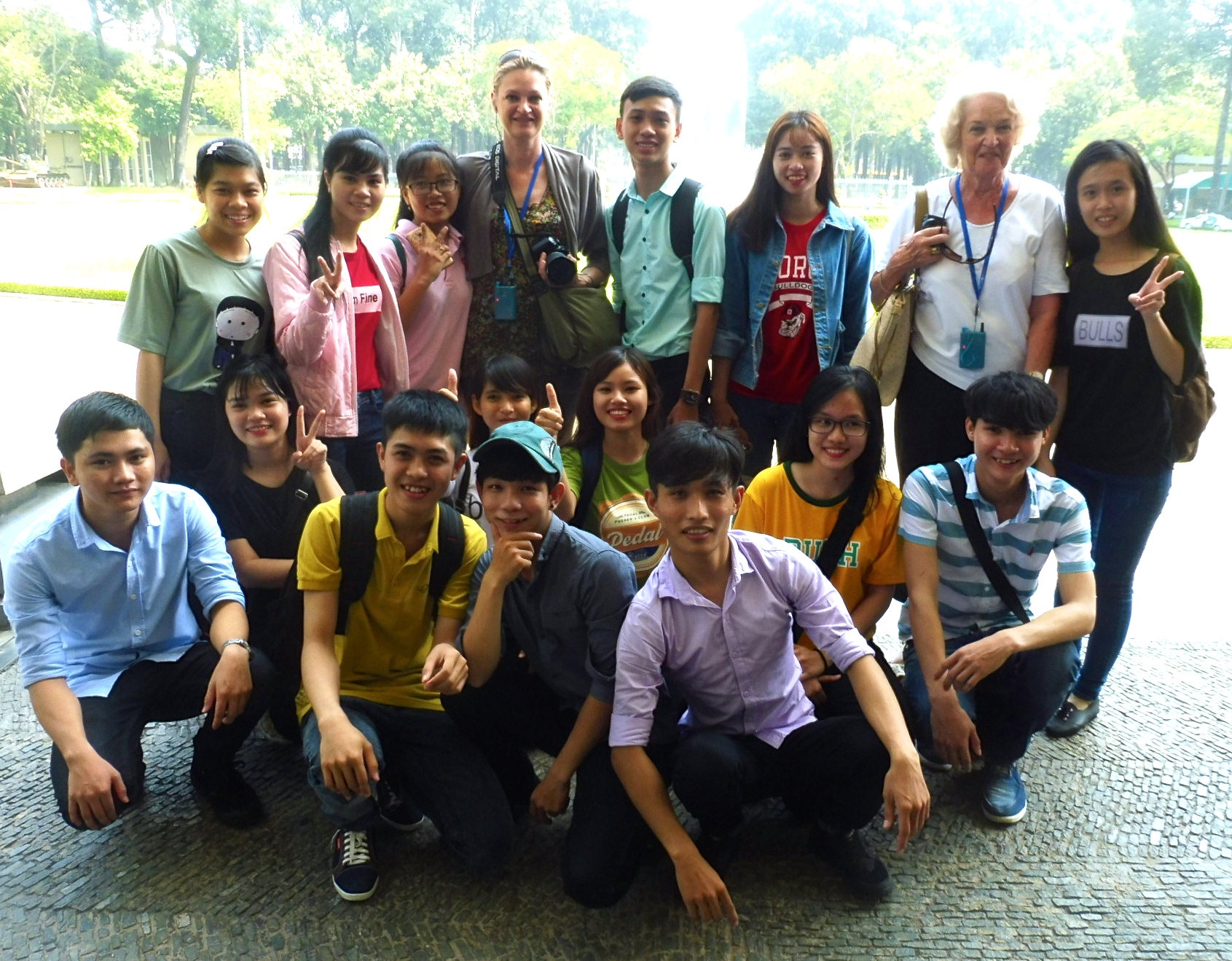The Future Belongs to the Young
Young People – A Majority in Viet Nam, Cambodia and Laos
The photo was taken in front of the Presidential Palace in Saigon (October, 2016 hdm).
This group of young people wanted a photo with two of our group from South Africa with whom they had been chatting. Virtually everywhere you travel in Viet Nam and Cambodia you will find young people eager to exchange a few words and to have a photo taken with a tourist. Look at those wonderful smiles.
Part I: An Open Letter
Part II: Indochina Wars: 1940 – 1990
Part III: Resilience of the Human Spirit (in progress, Password Protected)
Part IV The Future Belongs to the Young
Part V River Cruising (in progress)
Part IV: The Future Belongs to the Young
The title, of course, is used in a figurative sense. As I grow older and particularly over the last 25 years (50-75), I have become convinced that forging a better world must be placed in the hands of positive, forward-looking young people. You might also include older people, but only if they have not become jaded and are willing to debate the issues with an open mind. Any discussion that focusses on Us versus Them is going nowhere.
Lynn and I have travelled to many countries that have only recently emerged from war or were controlled in whole or in part by vicious tyrants. It was pretty easy to tell how well the country was doing by simply talking to young people. If the young are happy and forward looking, we felt assured the country was moving in a positive direction, but if they were looking for a way out, it was a good bet the country was not doing all that well.
Three weeks in Viet Nam and Cambodia, countries that have only been on the road to recovery for just over 25 years and where the populations are young (e.g. the median age in Viet Nam is 30, in Cambodia, 25, and Laos 22), further convinced us this is the case. In you happen to read the two linked Travelogues, perhaps you will gain some understanding as to why we think this to be the case, and why we think Canada, even with a somewhat older population (median age 40), in recent years at least, is following suit.
The United States may eventually follow the same path as soon as young people wake up (as they did during the turbulent 60’s and 70’s) and begin to elect politicians who look toward a positive future rather than one filled with hate and fear.
When we awoke November 9, 2016, at 4:00 am, to see the headline Trump Elected President, it was disheartening, but not the least bit surprising. What hurt was to see a once great nation turning on itself not just in this election, but over the past couple of decades. Fear and hate is now standard fare in the United States, and Trump played those cards in most excellent fashion.
The fault-line is poverty and a lack of any real hope for the future for a large percentage of the population. We have all watched as those who manage large sums of money (e.g. Wall Street, Big Banks, Big Business, Multinationals) protect themselves (again and again) against being held accountable for their financial misdeeds. It has crippled large sections of an otherwise wealthy nation, and their government seems unable or unwilling to tackle these ongoing issues.
During the summer of 2015, my son-in-law Ed Walker and grandson Grayson travelled to New Orleans for a culinary convention. Unlike our previous visit in 2013, this time we travelled outside the French Quarter. Just a few blocks away from the glitter, the desperation and lack of hope are palpable.
It was hard to believe that two cities, Victoria and New Orleans, or even Louisiana and British Columbia, could be so similar, yet so different when it came to the poverty fault-line. Link to a full discussion: New Orleans: Behind the Mask
I have no idea how the demographics played out in the recent US election, but in almost every state across the southeast and the North Central Industrial and Farm Heartland, people voted for Trump. He directed his message to those who have suffered much or simply wanted change. Clinton, on the other hand, in every way represented the establishment. She had no connection with the poor or disposed.
FB and Twitter posts were all over the map, but a thread posted by our youngest daughter, Christine contained some amazing information. It only took 25% of the US electorate to put Trump in office. Nearly 50% of the population did not bother vote. Further down Christine’s thread was this comment about Canadian election statistics:
It only took 25% of the US electorate to put Trump in office. Nearly 50% of the population did not bother vote. Further down Christine’s thread was this comment about Canadian election statistics:
“The median voter turnout for Canada’s general elections since 1867 has been 70.3%. The average turnout for general elections since 1867 is 70.7%. The highest turnouts were in 1958, 1962, and 1963, at just over 79%. The lowest turnout on record was in 2008, at 58.8%. For the 2011 election, at 61.4%, was the third lowest in Canadian history. The next election, 2015 with Harper vs Trudeau, rose sharply to 68.5%, the highest turnout since 1993. (Celeste Folk St Onge)”
Now back to the role of young people. In the recent US election and the Canadian elections of 2008 and 2011, young people stayed away from the ballot box. Then in the recent Canadian election (2015) they returned with a vengeance when three parties brought generally positive messages about the future, while the fourth continued to carry the hate and fear message that had served them so well in previous elections.
An editorial posted following the Canadian election titled: The New Face of Canada outlined why young people represented a turning point in moving the country forward.
Perhaps over the next four years, youth in the United States will find their voice and as in Canada, just say no to the politics of fear.
Is this possible? I believe it is.
Harold McNeill
Link to November 2016 Travelogue Viet Nam and Cambodia
Link to a 2015 editorial: The New Face of Canada
(306)
Trackback from your site.

